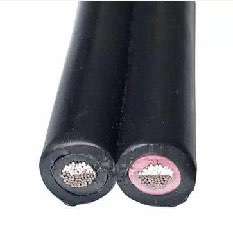 Author: Joey Wan
Author: Joey Wan  August 08,2022
August 08,2022
A large number of DC cables in photovoltaic power plants need to be laid outdoors, and the environmental conditions are harsh. The cable materials should be determined according to the resistance to ultraviolet rays, ozone, severe temperature changes and chemical erosion.

The long-term use of ordinary material cables in this environment will cause the cable sheath to be fragile, and even decompose the cable insulation. These conditions will directly damage the cable system, but also increase the risk of short-circuiting the cable. In the medium and long term, the possibility of fire or personal injury is also higher, which greatly affects the service life of the system.
Therefore, it is very necessary to use photovoltaic special cables and components in photovoltaic power plants. With the continuous development of the photovoltaic industry, the photovoltaic accessories market has gradually formed. As far as cables are concerned, photovoltaic professional cable products of various specifications have been developed.
The recently developed electron beam cross-link cable, rated at 120°C, can withstand harsh weather environments and withstand mechanical shocks.
Another example is the RADOX cable, which is a special solar energy cable developed according to the international standard IEC216. In the outdoor environment, the service life is 8 times that of the rubber cable and 32 times that of the PVC cable.
Photovoltaic special cables and components not only have the best weather resistance, UV resistance and ozone erosion resistance, but also can withstand a wider range of temperature changes (for example: from -40 to 125 ℃).
In Europe, technicians have passed tests, and the temperature value that can be measured on the roof is as high as 100 to 110 °C.
